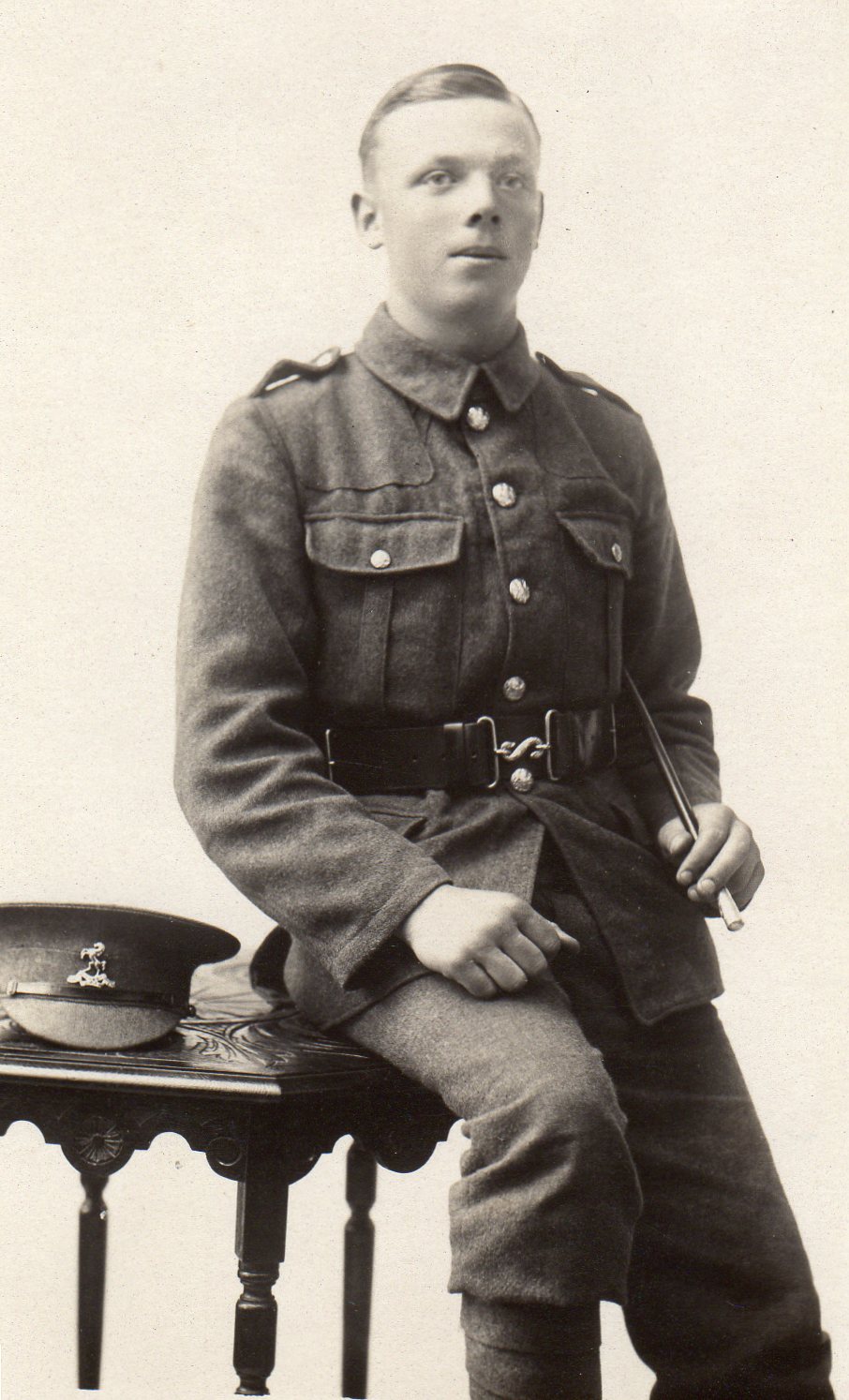L/Cpl
William Archibald Deering
Informations sur naissance
|
Année de naissance: 1895 |
|
Lieu de naissance: Kent, Angleterre, Royaume-Uni |
Informations service militaire
|
Pays: Angleterre, Royaume-Uni |
|
Force armée: British Expeditionary Force |
|
Rang: Lance Corporal |
|
Numéro de service: G/8814 |
|
Incorporation nom de lieu: Gravesend, Kent, Angleterre, Royaume-Uni |
|
Unités: — The Queen’s Own (Royal West Kent Regiment), 10th Bn. (Dernière unité connue) |
Informations sur décès
|
Date de décès: 31/07/1917 |
|
Lieu de décès: Opaque Wood, Hollebeke, Belgique |
|
Cause du décès: Killed in action (K.I.A.) |
|
Âge: 22 |
Mémorial
|
Ypres (Menin Gate) Memorial Panneau: 45 |
Distinctions et médailles 2
|
British War Medal Médaille |
|
Victory Medal Médaille |
Points d'intérêt 3
| #1 | Lieu de naissance | ||
| #2 | Lieu d'enrôlement | ||
| #3 | Lieu du décès (approximatif) |
Mon histoire
William Archibald Deering - a 22-year-old from Wrotham, Kent – was a Lance Corporal in “B” company, of the 10th Battalion Queen’s own Royal West Kent Regiment at the time of the opening day of the Battle of Passchendaele. The Battalion was part of the 123rd Brigade which was part of the 41st Division.
The 41st Division’s task was to protect the right flank of the main attack by attacking along the Ypres-Comines. While the 122nd Brigade advanced on the village of Hollebeke, the 123rd brigade advanced from Battle Wood, east of the Canal. It was assigned to capture three objectives. The first objective (the red line) was situated at Imperfect Trench and Opaque Keep. The second objective (the Blue Line) was a trench running from Graves Copse, through Opaque Wood, towards Hessian Wood. The last objective was the Green Line.
The 10th Battalion Royal West Kents were positioned in the centre of the Brigade’s front. They were to establish strongpoints in front of the Red and Blue line.
Lance corporal William Archibald Deering served in “B” company. They were to carry out the first and second wave of the attack (at the left flank of the Battalion’s front), and were to mop up the Red and Blue line. They were also to establish the strongpoints. The third wave would then mop and consolidate the Green Line. The fourth wave was to create outposts and the fifth was in charge of taking up positions between the Red and Blue line.
The attack was launched at 3.50 am on 31 July 1917. By 6.10 a.m., the Royal West Kents reportedly had succeeded in taking the Red line, as well as the Blue line. Whilst proceeding through Opaque Wood towards the Blue Line, they were exposed to heavy machine-gun fire. The Blue Line was consolidated by 8 a.m. All attempts on taking the Green Line, however, failed.
The Battalion had advanced through heavy German machine-gun fire and suffered severe casualties. Five officers were killed and three were wounded. Thirty-three other ranks were killed, 56 men went missing and 141 men were wounded. The young Lance Corporal William Archibald Deering was killed on 31 July 1917. William has no known grave and is remembered on the Ypres (Menin Gate) Memorial.
The 41st Division’s task was to protect the right flank of the main attack by attacking along the Ypres-Comines. While the 122nd Brigade advanced on the village of Hollebeke, the 123rd brigade advanced from Battle Wood, east of the Canal. It was assigned to capture three objectives. The first objective (the red line) was situated at Imperfect Trench and Opaque Keep. The second objective (the Blue Line) was a trench running from Graves Copse, through Opaque Wood, towards Hessian Wood. The last objective was the Green Line.
The 10th Battalion Royal West Kents were positioned in the centre of the Brigade’s front. They were to establish strongpoints in front of the Red and Blue line.
Lance corporal William Archibald Deering served in “B” company. They were to carry out the first and second wave of the attack (at the left flank of the Battalion’s front), and were to mop up the Red and Blue line. They were also to establish the strongpoints. The third wave would then mop and consolidate the Green Line. The fourth wave was to create outposts and the fifth was in charge of taking up positions between the Red and Blue line.
The attack was launched at 3.50 am on 31 July 1917. By 6.10 a.m., the Royal West Kents reportedly had succeeded in taking the Red line, as well as the Blue line. Whilst proceeding through Opaque Wood towards the Blue Line, they were exposed to heavy machine-gun fire. The Blue Line was consolidated by 8 a.m. All attempts on taking the Green Line, however, failed.
The Battalion had advanced through heavy German machine-gun fire and suffered severe casualties. Five officers were killed and three were wounded. Thirty-three other ranks were killed, 56 men went missing and 141 men were wounded. The young Lance Corporal William Archibald Deering was killed on 31 July 1917. William has no known grave and is remembered on the Ypres (Menin Gate) Memorial.
Sources 6
|
Ancestry https://www.ancestry.com/ Sources utilisées |
|
Atkinson T., The Queen's Own Royal West Kent Regiment 1914-1919, London, Simpkin Marshall Hamilton Kent & Co LTD, 1924, pg. 275-281. Sources utilisées |
|
CWGC https://www.cwgc.org/find-war-dead/casualty/1609634/deering,-william-archibald/ Sources utilisées |
|
McCarthy C., The Third Ypres Passchendaele. The Day-by-Day Account, London, Arms & Armour Press, 1995, pg. 18-21. Sources utilisées |
|
Naval and Military Archives http://www.nmarchive.com/ Sources utilisées |
|
The Long Long Trail http://www.longlongtrail.co.uk/army/regiments-and-corps/the-british-infantry-regiments-of-1914-1918/the-queens-own-royal-west-kent-regiment/ Sources utilisées |
